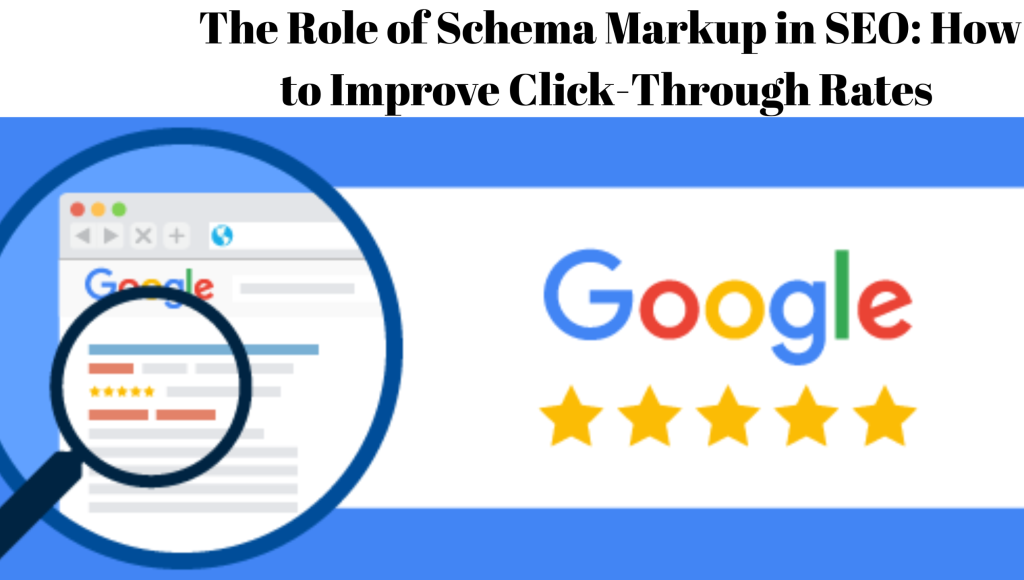
In the ever-evolving landscape of search engine optimization (SEO), staying ahead of the competition means utilizing every tool at your disposal. One such tool is Schema Markup, a powerful yet often underutilized SEO strategy. By implementing structured data, businesses can improve search engine visibility and significantly increase their click-through rates (CTR).
In this guide, we’ll explore what Schema Markup is, how it impacts SEO and practical steps to implement it for better CTRs.
What is Schema Markup?
Schema Markup (also known as structured data) is a type of code added to a webpage to help search engines understand the content better. It enables search engines like Google, Bing, and Yahoo to display enhanced search results known as rich snippets.
Examples of Rich Snippets
- Star Ratings – Displays review ratings for products, services, and articles.
- FAQ Snippets – Shows frequently asked questions directly on the search page.
- Recipe Markup – Highlights cooking instructions, time, and calories.
- Event Markup – Displays upcoming events with dates and locations.
- Product Markup – Shows product prices, availability, and ratings.
How Schema Markup Improves Click-Through Rates
1. Enhanced Search Appearance
Rich snippets make your search result more attractive and informative, increasing the likelihood of users clicking on your link.
2. Higher Search Rankings
While Schema Markup isn’t a direct ranking factor, it improves user engagement, which can indirectly boost rankings. Google rewards pages with higher engagement by ranking them higher in search results.
3. Increased Trust and Credibility
When users see star ratings, FAQs, and product details in the search results, they are more likely to trust and click on those links.
4. Better Mobile Experience
Structured data helps Google create more mobile-friendly search experiences by providing concise and relevant information instantly.
How to Implement Schema Markup for SEO
Step 1: Choose the Right Schema Type
Go to Schema org and find the structured data type that fits your content. Popular schema types include:
- Organization (For businesses and brands)
- Person (For personal websites)
- Local Business (For physical stores)
- Article (For blogs and news sites)
- Product (For e-commerce sites)
Step 2: Use Google’s Structured Data Markup Helper
- Visit Google’s Structured Data Markup Helper.
- Select the type of content you want to mark up.
- Enter the URL of the page or paste the HTML code.
- Highlight elements like names, ratings, and descriptions.
- Generate the JSON-LD or Microdata code and add it to your webpage.
Step 3: Validate Your Schema Markup
After adding the markup, test it using:
- Google’s Rich Results Test (https://search.google.com/test/rich-result)
- Schema Markup Validator (https://validator.schema.org/)
Step 4: Monitor Performance in Google Search Console
Google Search Console provides insights into how structured data is performing, showing any errors that need fixing.
Best Practices for Using Schema Markup
- Use JSON-LD Format – Google recommends JSON-LD over Microdata or RDFa.
- Be Accurate – Ensure that the structured data matches the actual content on the page.
- Keep It Updated – Regularly review and update Schema Markup for accuracy.
- Combine with SEO Strategies – Schema Markup should complement other SEO efforts like keyword optimization and link building.
Conclusion
Schema Markup is a game-changer for SEO and improving click-through rates. By implementing structured data, businesses can create rich snippets that attract more users, enhance visibility, and build trust. If you haven’t started using Schema Markup yet, now is the time to do so and stay ahead of the competition.
About us
Orexis is one of the leading Digital marketing companies in Kozhikode, Kerala, that delivers Complete digital Marketing services like Social media promotions, SEO, PPC, Branding, etc. to their clients. Cost-effective online advertising services and customer satisfaction are our mottoes.
Subscribe to our newsletter!
Recent Posts
- Best SEO Strategies for E-commerce Websites April 11, 2025
- How to Create Interactive Blog Content That Keeps Readers Hooked April 5, 2025
- The Role of Schema Markup in SEO: How to Improve Click-Through Rates March 27, 2025









